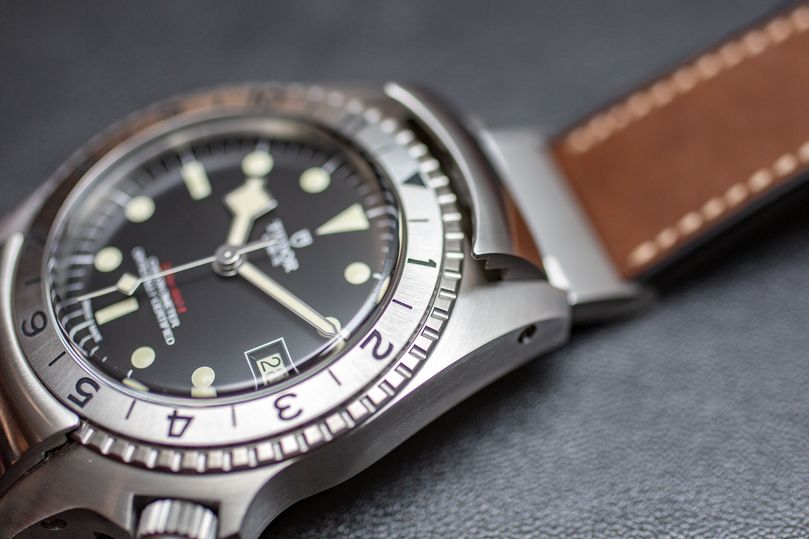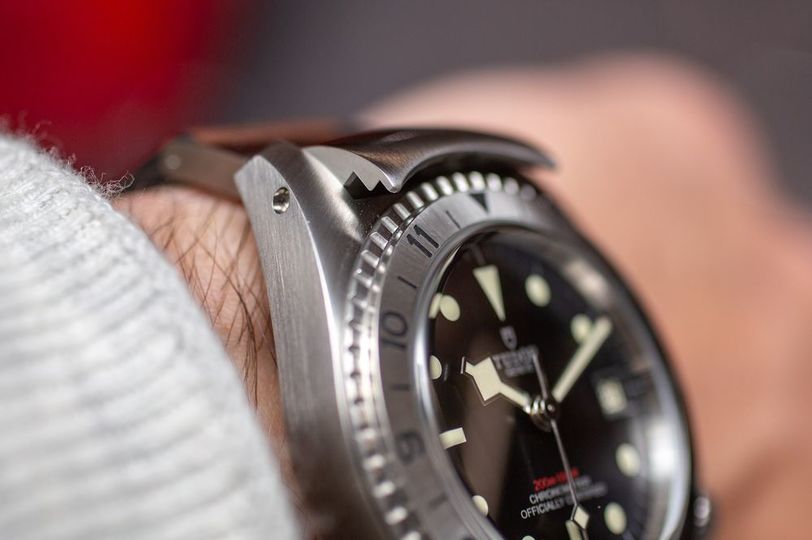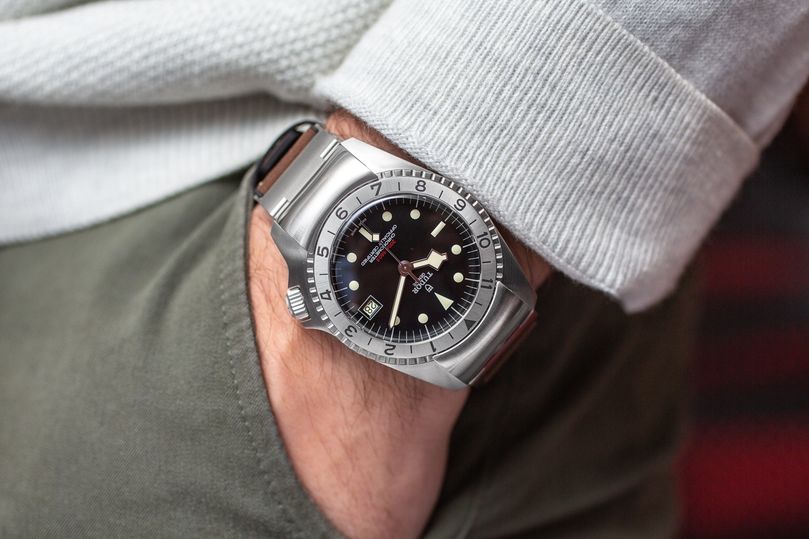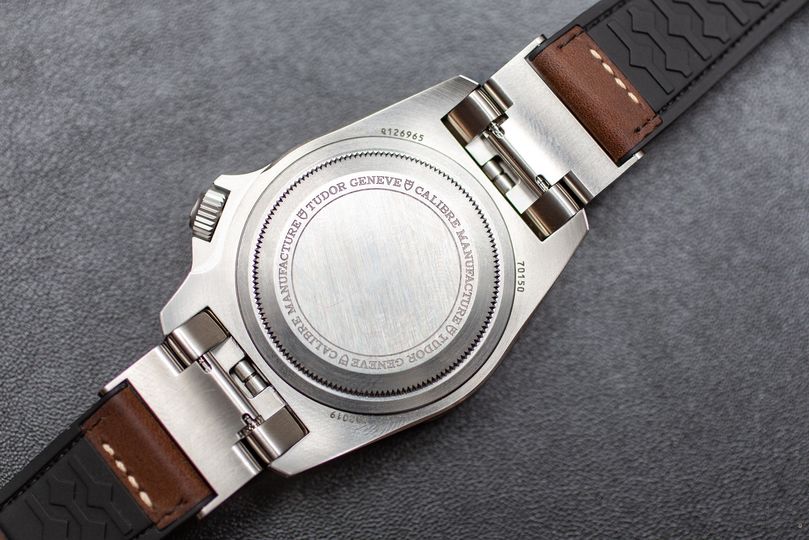The new Tudor Black Bay P01 is born from an experimental 1960s prototype created for the U.S. Navy. It’s this parentage which contributes to one of the Commando’s key features: a unique locking bezel mechanism.
In the 1960s, the tolerances on watches weren't what they are today. Back then, the mechanism that allows bezels to ratchet generally wasn’t as sturdy and well-engineered. A bezel getting knocked out of place could actually cause a problem as far as timing is concerned, and when it comes to Naval equipment, it could potentially mean a real problem.
The Commando program, as Tudor code-named it, was initially created as an R&D effort to keep the bezel exactly where it should be.
The research culminated in a design for which Rolex filed a patent in 1968. They settled on a mechanism that sat between the lugs and used tension to clamp down on the bezel in resting position, essentially locking it in place until the "hood" was manually disengaged and the bi-directional bezel was able to turn freely.
Precisely why the Commando watch program was scrapped, we don’t know. Presumably it was just too complicated an answer to a problem that demanded a simple solution.
Tudor eventually engineered out the flaws that made bezels sloppy, resulting in superb bezel mechanisms like that of the Black Bay.
And now, with the 2020s just around the corner, the Commando is back – in production and with a swagger borne of the unique story behind its birth.
The Black Bay P01’s case design and dimensions are very true to the original, which is why to me it immediately shout “60s”. And while that’s not a look which will go down well with everybody, keep in mind the watch was made for the Navy – the U.S. military doesn’t really care what something looks like as long as it works.
At 12 o'clock you’ll find the "claw" mechanism that locks the bezel in place.
It opens with a flip similar to the action of a fliplock on a high-end clasp, with pressure applied on the outer edge of the claw until it snaps open. Once open, it rests until you snap it back down again.
Even though the six o'clock "claw" looks identical to the one at 12 o'clock, it isn't functional: one active claw is all it takes to secure the bezel.
Despite the presence of the locking lug mechanism, there was enough articulation in the lug extensions to wrap around my wrist and trim the large 42mm case down to something that certainly feels tall, but width-wise it doesn't wear like a hockey puck.
The lug width is 20mm, so there are a bevy of options when it comes to strap choices. I personally would like to see it on some mesh, as I think it's super comfortable and nails the '60s look well. A beefy NATO, just a tad thicker than the fabric it comes on, might even do the trick.
Strapping the Black Bay P01 Commando to your wrist is entirely different from wearing a normal Black Bay.
It's not a difficult watch to wear, but let's be honest, nothing I'm doing necessitates a locked and secure bezel. It's a novelty, and ironically I'd probably play with the bezel even more now that there's another step involved in operating it.
Thankfully, the movement inside the P01 Commando is no retro-blast from the past: it runs the reliable MT5612, which in one iteration or another is present across the Black Bay range.
A bold break from the rest of the crowd-pleasing Black Bay family, with a small case and on-spec vintage execution, the Tudor Black Bay P01 launches in the USA in July 2019 at US$3,950.










22 Jul 2014
Total posts 15
It looks ok to me but I like my TAG or Omega watches.
Hi Guest, join in the discussion on The Tudor Black Bay P01 Commando features vintage swagger